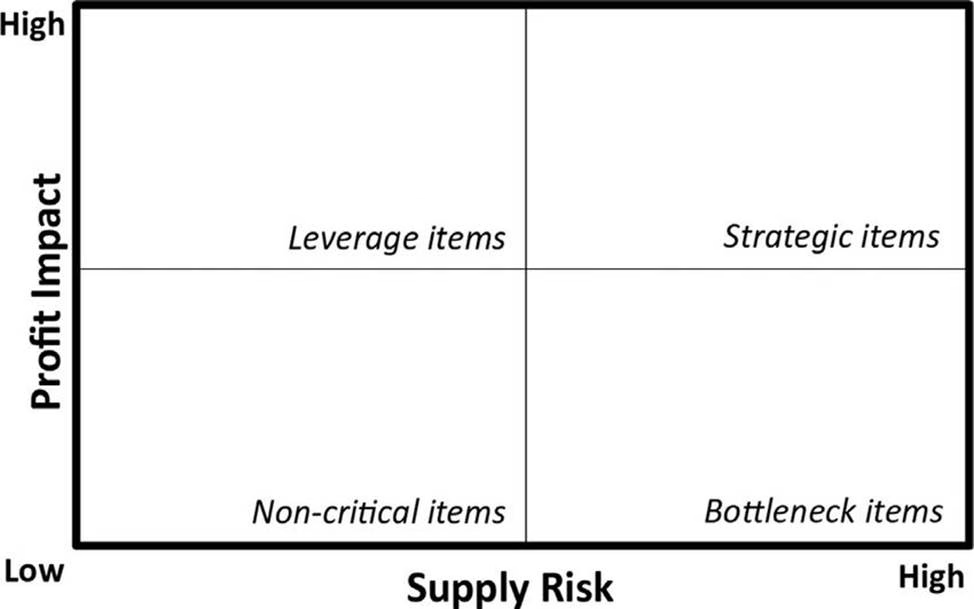CIPS L4M2 Defining Business Needs Online Training
CIPS L4M2 Online Training
The questions for L4M2 were last updated at Oct 20,2025.
- Exam Code: L4M2
- Exam Name: Defining Business Needs
- Certification Provider: CIPS
- Latest update: Oct 20,2025
A procurement team is categorising their purchased items into four quadrants of Kraljic’s supply chain portfolio matrix. They realise that there are some low-value items which come from very few suppliers in the market. The organisation is critically dependent on these suppliers. The team plans
to reduce the dependence by finding alternative sources. Is this a right course of action?
- A . Yes, the organisation needs to reduce the supply risks
- B . No, the organisation should run competitive biddings to exploit the competition
- C . No, there is no way to escape this dependency
- D . Yes, this action will dramatically increase the supplier’s bargaining power
Which of the following is the structured approach for defining customer requirements and translating them into technical specification?
- A . Kano model
- B . Thomas-Kilmann model
- C . Quality function deployment
- D . Mendelow’s matrix
Which of the following factors might prompt an organisation to procure an alternative product?
Select THREE that apply:
- A . Brand loyalty
- B . Relative value to money between options
- C . Buying organisation’s propensities to change
- D . Easy access to distribution channel
- E . Threat of retaliation
- F . Switching cost
Which of the following factors might prompt an organisation to procure an alternative product?
Select THREE that apply:
- A . Brand loyalty
- B . Relative value to money between options
- C . Buying organisation’s propensities to change
- D . Easy access to distribution channel
- E . Threat of retaliation
- F . Switching cost
Which of the following factors might prompt an organisation to procure an alternative product?
Select THREE that apply:
- A . Brand loyalty
- B . Relative value to money between options
- C . Buying organisation’s propensities to change
- D . Easy access to distribution channel
- E . Threat of retaliation
- F . Switching cost
Which of the following factors might prompt an organisation to procure an alternative product?
Select THREE that apply:
- A . Brand loyalty
- B . Relative value to money between options
- C . Buying organisation’s propensities to change
- D . Easy access to distribution channel
- E . Threat of retaliation
- F . Switching cost
Which of the following factors might prompt an organisation to procure an alternative product?
Select THREE that apply:
- A . Brand loyalty
- B . Relative value to money between options
- C . Buying organisation’s propensities to change
- D . Easy access to distribution channel
- E . Threat of retaliation
- F . Switching cost
Which of the following sources of information are considered as primary data? Select TWO that apply.
- A . The information about specific market sectors from trade associations
- B . Commercial publishers of market reports
- C . The collection of data from surveying customers
- D . RFI
- E . Reports in business magazines
At which stage of through-life contract management, procurement team needs to identify sources of risk and the ways to mitigate them?
- A . Specification stage
- B . Supplier relationship stage
- C . Tendering stage
- D . Contracting stage
Latest L4M2 Dumps Valid Version with 144 Q&As
Latest And Valid Q&A | Instant Download | Once Fail, Full Refund


